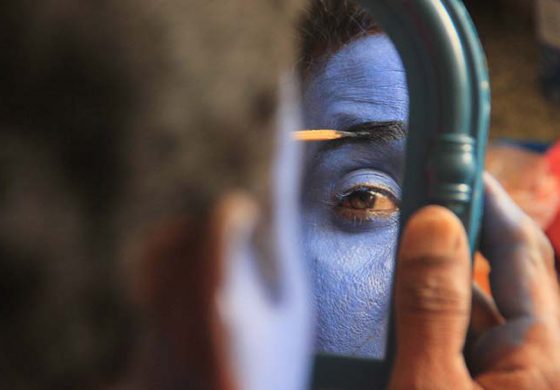What was the Gandhi-Tagore debate about?
When reading Gandhi or Tagore, we rarely pause to consider the kind of intellectual struggle they engaged in while reconnecting to the life with concepts embodied in Indian traditions. This is in part because we tend to assume that when they employ concepts from Indian thought, their access to the semantic and epistemic horizon of those concepts is without any uncertainty or hesitation and that somehow those concepts are received by them fully formed. The assumption may be bolstered by our sense that, when it comes to concepts of Indian thought, we are more distant from them than they were. At any rate, there is evidence enough to show that Indian intellectuals, mistakenly perhaps, think of their relationship to Western concepts – rights, equality, freedom, civil and political society, nationalism, etc., – as unproblematic and their understanding of them impeccable, whereas they would be less confident about their relationship with and understanding of concepts from Indian thought. Whether or not this is indeed the case, when we read Gandhi or Tagore we rarely interrogate their thought with a view to understanding their struggle with concepts. We have to understand their divergences (as indeed their convergences) through their struggle with concepts. Tagore’s argument that if we want to gain India in truth we have to make her more fully distinct in our minds informed all his intellectual activities (including the founding of the university).
Gandhi’s satyagraha was explicitly aimed at ethically strengthening the intellectual traditions that he thought had become hollowed as a result of colonialism[8]. Hind Swaraj is concerned with the particular kind of enslavement that colonialism had brought about and which was wrecking the intricate structures of the practical life evolved over a very long period of time.[9] The enslavement of Indians had a peculiar epistemic character: it taught them to ignore the kind of knowledge that organized the domains of practical life. Law, medicine, history, nationalism, the state bring in a way of looking and certain conceptualizations that begin to cleave reflections from the form of practical life in which they are embedded. Thus health, to take an example dear to Gandhi, no longer functions as a matrix of practical action, related integrally and reflectively to ends that inform not only that matrix but other adjacent matrices (or possible new ones that can be fashioned). In any case, health is not the state of my bare body. Law is not a resource that helps me resolve my conflictual relationships in my familial matrix or in the domain of business in a reflective way, but an instrument that creates new disputes which I can only deal with in its terms which extrudes reflection. History brings in a perspective that begins to distort my relationship to the kavya, purana and itihasa by transforming their function in the practical form of life. Similar considerations apply not only to nationalism, and to politics centered on the state, but to many more entities and conceptualizations that colonialism brought in. So let me speak of a cognitive/evaluative frame which, as it were, houses these entities and enslavement to which distorts, devalues and veils the domain of practical life, which I will term the “actional frame”[10].
When Tagore argues that the domain of modern education has rendered India indistinct and derivative, he was echoing Gandhi’s diagnosis of the Indian predicament in not only education, but in politics and economy too. Indeed, as we shall see, both of them locate the distinctiveness of Indian thought in the centrality that it accords to learning. The experiential conception of truth begins to acquire clarity and depth as both Gandhi and Tagore elaborate the idea that learning is what spiritualizes all domains of life, be it erotics or economics or education.
Tagore’s diagnosis of the predicament of Indian thought was that colonialism and, in particular, colonial education, had made the Indian mind diffuse, helpless and obscure to itself. Consequently, India itself had become indistinct. How to make India “distinct” was how Tagore formulates the task for himself and his contemporaries. Tagore reworks a thought from Ishopanishad to both characterize the predicament and find a creative way out. In what follows, I will make an attempt to reconstruct Tagore’s argument and explore its philosophical depth, plausibility and fruitfulness. That will make it easier for us to grasp the deep affinity between Gandhi’s and Tagore’s thought. Once the frame that shows the deep convergence of their views emerges with its distinctive horizon, we will be able to use that frame to grasp how the different domains of the colonial present they were confronting is normed and distorted by another frame that actively repulses the horizon of understanding these two thinkers were trying to elaborate through their struggle with Indian thought. I will call the former “actional frame” and the latter “quasi-cognitive/evaluative frame.” That is to say, a deeper understanding of the convergent frame itself will provide us with the resources to reframe the debate between them in such a way that we can both see why their divergences pose a puzzle and explain how the divergences come about. The reframing, then, is at the same time an attempt to resume their remarkable struggle with the concepts and conceptual capacities of Indian thought, their own debate with one another illustrating the difficulties involved in making it available to understand the present.
The education of desire
The central insight of Tagore’s thought enables us to conceptualize the link between social structures and the training of desires that characterizes Indian culture. What had begun to appear as excessive restrictions was anything but that: the elaborate set of actions that constitute sociality train desire in such a way that no residue is left behind. The learning that enables such actions to be invented, executed and multiplied cannot be restricted to any domain; it is at the centre of all domains of activities. Hence Tagore’s poetic invocation of the figure of Saraswati sitting on the lotus to signal the centrality of learning to all spheres of life in Indian culture. What is special about this education, what sets it apart from the way education is conceived in the West? Learning directs action to assimilate truth, or what is the same thing, achieve person-end unity in such a way that it is impossible to imagine the person without the end. Tagore gives the example of the villagers who think nothing of offering water to his overheated car despite the fact that water is scarce. As Tagore puts it, these villagers cannot think of themselves without this end, generosity, which for them is not a special or supererogatory act. This kind of learning or education which involves “assimilation of truth” takes centuries to achieve and when that learning disintegrates, what seemed inseparable, the person-end unity, begins to come apart. Understanding what causes this disintegration was an important intellectual task for Tagore. The person-end unity explains what it is for a person to become vague or indistinct to oneself. In another example Tagore gives, we see this clearly: a child who has just got himself a new toy from an English shop refuses to join the children immersed in playing with whatever crude things they have devised. The play is what reveals the creativity, the dharma of childhood, not the toy, which now begins to “obscure” the revelation of that dharma. In yet another example, we see the people of Mahsud protecting the pilot who was bombing their village but whose plane has crash landed in the village. Their “ideal” of hospitality does not allow them to separate that truth from the rhythm of relationship they have assimilated it into. So dharma is this rhythm of relationship, the simplicity achieved by the complete assimilation of truth. This simplicity is, as Tagore puts it, “the product of centuries of culture,” and it is “difficult of imitation.” When Tagore talks about learning being at the centre of life in all domains in India, he is pointing to the process that has created this rhythm of relationship, what I have been calling the person-end unity. He realizes that some process set in motion by colonialism is causing the disintegration of “this rare fruit of a higher life.” He insists, therefore, that “we must get to know this force of disintegration and how it works.”[11]





